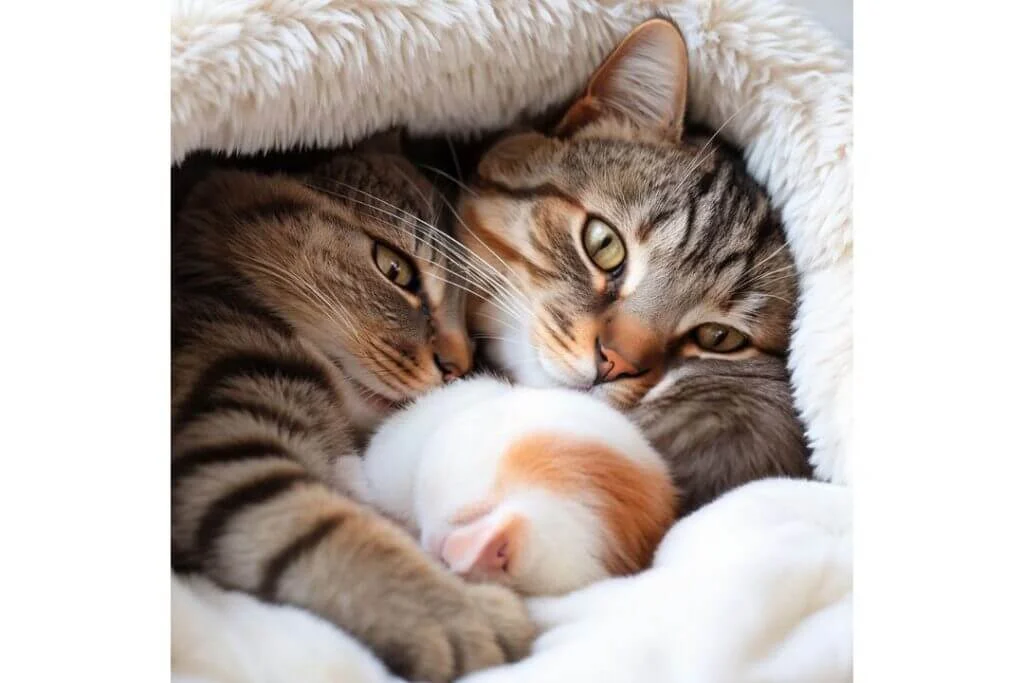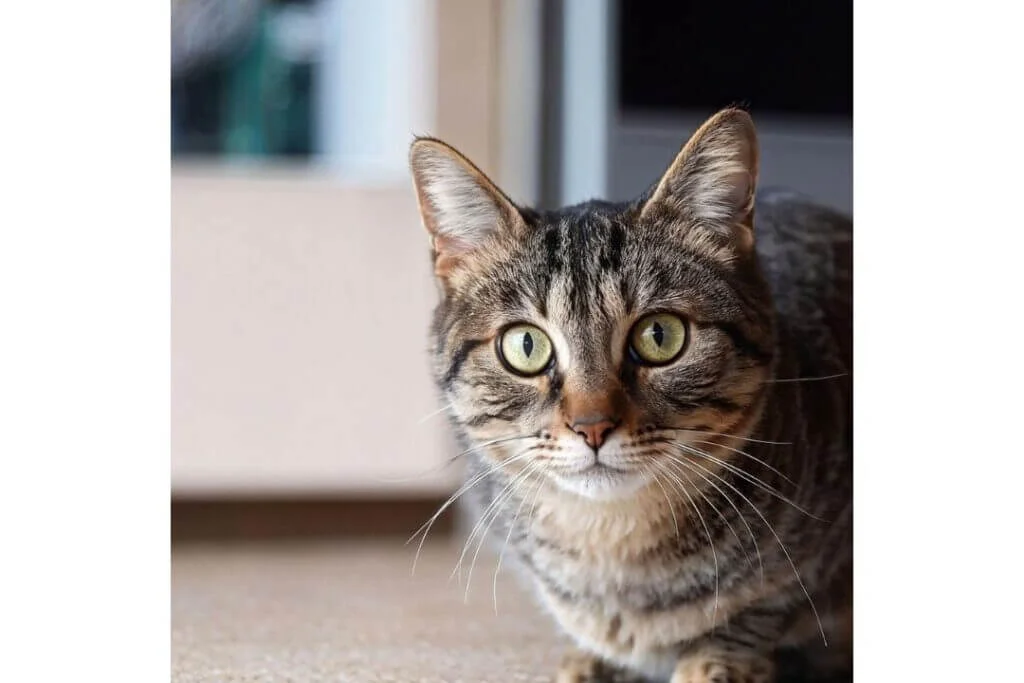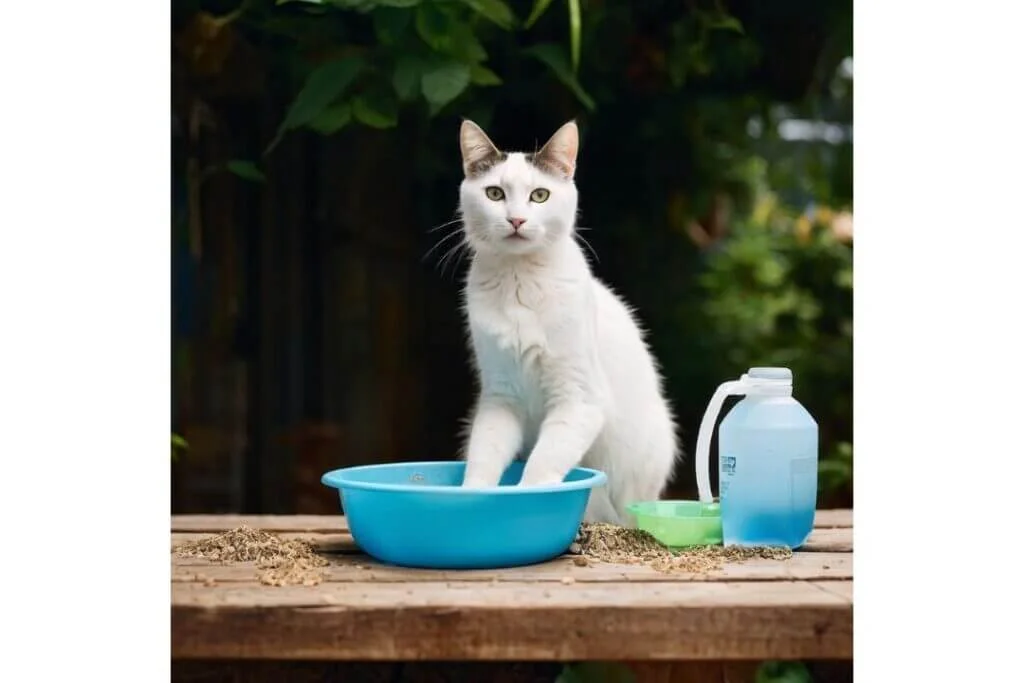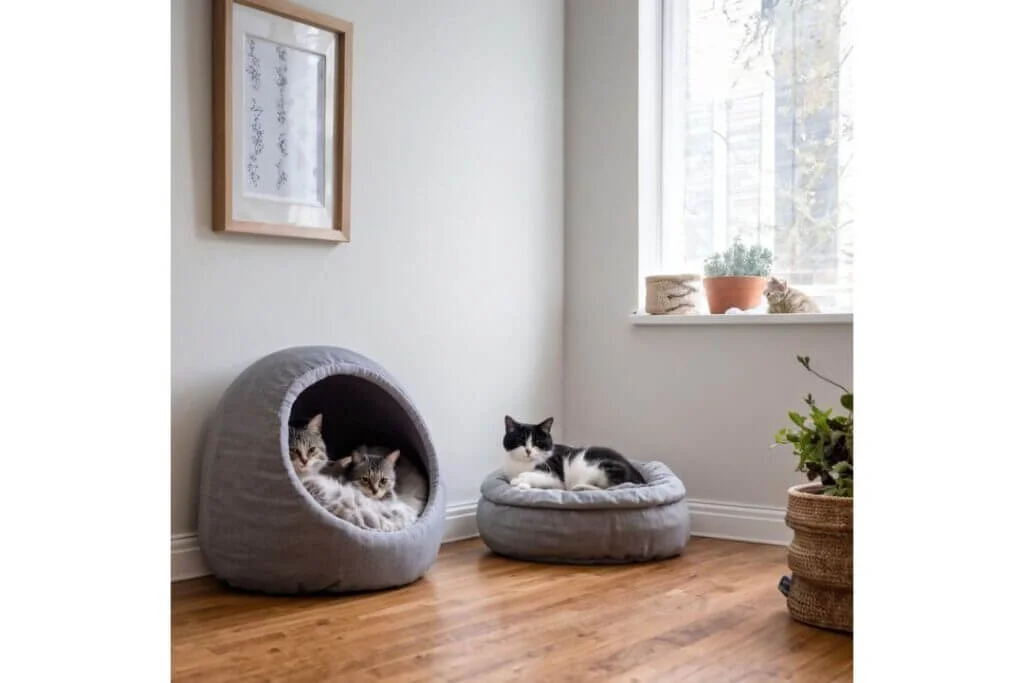Introduction
Cats are fascinating creatures with instincts and behaviors that sometimes baffle their human companions. One common and perplexing behavior is a mother cat’s tendency to move her kittens from one location to another. Understanding why this happens and how to stop a cat from moving kittens is essential for ensuring the safety and well-being of both the mother and her young. In this comprehensive guide, we’ll explore the reasons behind this behavior and provide practical tips on how to manage it effectively.
Why Do Cats Move Their Kittens?
Natural Instincts
Mother cats, or queens, have strong maternal instincts. In the wild, moving their kittens can protect them from predators and environmental dangers. This instinct doesn’t disappear just because a cat is domesticated.
Environmental Factors
Cats might move their kittens if they perceive their current environment as unsafe. This could be due to noise, activity, or other pets. A peaceful, quiet environment is crucial for a new mother and her kittens.
Health and Safety Concerns
If a mother cat feels that her kittens are at risk due to health issues or safety concerns, she will move them to a location she deems safer. This can include concerns about cleanliness, temperature, and human interference.
Identifying the Signs of a Cat Preparing to Move Her Kittens

Behavioral Changes
A mother cat preparing to move her kittens may exhibit increased restlessness, anxiety, and frequent pacing. She may also start grooming her kittens more intensively.
Nesting Habits
You might notice your cat searching for new, hidden places to create a nest. She may dig, rearrange bedding, or carry objects to the new spot.
Vocalizations
Increased vocalization is another sign. A mother cat may meow more frequently or make specific sounds to communicate with her kittens and prepare them for the move.
Choosing the Right Location for the Nest
Quiet and Safe Environment
Select a quiet, low-traffic area of your home. This location should be free from loud noises and disruptions, providing a calm space for the mother and her kittens.
Accessibility for the Mother Cat
Ensure that the chosen spot is easily accessible for the mother cat. She should be able to come and go without difficulty, ensuring she can care for her kittens as needed.
Temperature Control
Keep the nesting area at a comfortable, consistent temperature. Newborn kittens are unable to regulate their body temperature, so maintaining warmth is essential.
Preparing a Safe and Comfortable Nesting Area
Necessary Supplies
Provide clean, soft bedding such as blankets or towels. A shallow box or a dedicated cat bed can create a cozy nest.
Hygiene and Cleanliness
Ensure the nesting area is clean and free of hazards. Regularly change the bedding to maintain a sanitary environment.
Comfort and Warmth
Add extra layers or a heating pad (on a low setting) to keep the area warm. Avoid direct drafts and ensure the space remains dry.
Reducing Stress for the Mother Cat

Minimizing Human Interaction
Limit the amount of time you spend handling the mother cat and her kittens. Too much interaction can cause stress and prompt her to move the kittens.
Avoiding Loud Noises
Keep the environment as quiet as possible. Loud noises can startle the mother cat and make her feel that the current location is unsafe.
Providing a Consistent Routine
Maintain a consistent feeding and cleaning routine. Predictability can help reduce stress for the mother cat.
Monitoring the Health of the Mother Cat and Kittens
Regular Vet Visits
Schedule regular check-ups with your veterinarian to ensure the health of both the mother and her kittens.
Signs of Illness to Watch For
Monitor for signs of illness such as lethargy, poor feeding, or abnormal discharge. Early detection can prevent serious health issues.
Proper Nutrition and Hydration
Provide high-quality, nutritious food and fresh water. The mother cat needs extra calories and nutrients to support milk production.
Handling the Kittens with Care
When to Interact
Handle the kittens only when necessary, especially in the first few weeks. This minimizes stress for both the mother and her kittens.
Proper Handling Techniques
Always support the kitten’s body and avoid rough handling. Gentle, brief interactions are best.
The Importance of Bonding Time
Allow the mother cat ample time to bond with her kittens without interference. This is crucial for their development and her well-being.
Creating a Safe Environment

Securing the Home
Ensure that your home is secure and free from potential hazards. Close off rooms or areas that could pose a danger to the kittens.
Keeping Other Pets Away
If you have other pets, keep them separated from the mother cat and her kittens to prevent stress and potential harm.
Baby-Proofing the Area
Remove small objects, cords, and other items that could pose a choking or injury risk to the kittens.
Understanding When to Intervene
Signs the Mother Needs Help
If the mother cat appears distressed, is not feeding her kittens, or seems unwell, it may be necessary to intervene.
When to Call a Vet
Consult your veterinarian if you notice any health issues or if the mother cat rejects a kitten. Professional guidance can ensure the best care.
Safe Ways to Assist the Mother Cat
If intervention is needed, approach the mother cat calmly and gently. Use soft tones and slow movements to avoid startling her.
The Role of the Human Caregiver
Providing Support Without Interfering
Your role is to support the mother cat by providing a safe, clean environment and monitoring their well-being without excessive interference.
Observing and Documenting Behavior
Keep a close eye on the mother and kittens’ behavior, noting any changes or concerns. This information can be valuable for your veterinarian.
Knowing When to Step Back
Recognize when to give the mother cat space. Too much human interaction can be counterproductive and stress-inducing.
Common Mistakes to Avoid

Overhandling the Kittens
Avoid handling the kittens too much, especially in the early days. Excessive handling can cause stress and health issues.
Ignoring the Mother’s Needs
Pay attention to the mother cat’s needs. Ensure she has food, water, and a clean environment to reduce the likelihood of her moving the kittens.
Inconsistent Care
Maintain a consistent routine in feeding, cleaning, and care. Inconsistencies can stress the mother cat and disrupt her behavior.
How to Bathe a Stray Cat (A comprehensive Guide 2024)
Why Are Black Cats So Sweet A Detailed Guide 2024
Why Do Cats Lick Themselves After a Bath?
When to Allow the Mother Cat to Move Her Kittens
Recognizing Safe Moves
Sometimes, moving the kittens can be a natural part of their care. Recognize when the mother cat is moving them to a safe, suitable location.
Ensuring the New Location is Suitable
If the mother cat moves her kittens, check that the new location meets the same safety and comfort standards as the original nest.
Supporting the Transition
Help the mother cat by making the new nest as comfortable and secure as possible. Provide fresh bedding and ensure it’s a quiet, safe spot.
Conclusion
Understanding and managing a mother cat’s behavior when she moves her kittens is essential for their safety and well-being. Cats are naturally instinctive animals, and their behaviors, especially those of a mother cat, can sometimes be perplexing to human caregivers. A mother cat may move her kittens for several reasons, including seeking a safer environment, responding to perceived threats, or following her innate maternal instincts. By recognizing these behaviors and responding appropriately, you can significantly reduce the stress and frequency of these moves.

First and foremost, creating a secure, comfortable, and quiet environment is crucial. The nesting area should be free from loud noises, other pets, and unnecessary human interaction, as these can all be stressors for the mother cat. Providing a consistent routine for feeding and care helps in maintaining a calm and predictable environment, which can further reduce the mother cat’s anxiety and the likelihood of her moving her kittens.
It is also important to monitor the health and behavior of both the mother cat and her kittens. Regular veterinary check-ups are essential to ensure that they are healthy and thriving. Watch for signs of stress in the mother cat, such as excessive grooming, vocalizations, hiding, or changes in eating habits. Early detection of any health issues or signs of stress can prevent more serious problems and ensure timely intervention.
When it comes to handling the kittens, minimal interaction is key, especially in the first few weeks of their lives. Handle the kittens only when necessary and always with clean hands. This minimizes the risk of transferring scents that might cause the mother cat to move them. Additionally, supporting the mother cat without interfering too much allows her to bond with her kittens and care for them naturally, which is crucial for their development.
In some cases, despite your best efforts, the mother cat might still move her kittens. Recognizing safe moves and ensuring the new location is as secure and comfortable as the original nest is important. Provide fresh bedding, maintain a consistent temperature, and ensure the area is free from hazards. If the mother cat appears distressed or if the kittens seem unwell, it is crucial to consult your veterinarian for professional advice and guidance.
By observing their behavior closely, providing necessary care, and consulting with your veterinarian when needed, you can create an environment where the mother cat feels confident and secure. This reduces the need for her to move her kittens frequently, ensuring a healthy, happy start for both the mother cat and her kittens. With the right approach and a bit of patience, you can support the natural behaviors of the mother cat while ensuring the safety and well-being of her kittens.
FAQs
- Why does my cat keep moving her kittens?
- Cats move their kittens primarily due to instincts related to safety and comfort. They might also move them if they feel the current environment is unsuitable or if they perceive potential threats.
- How long should I leave my cat and her kittens alone?
- It’s best to minimize interaction, especially in the first two weeks. Ensure they have a quiet, comfortable space and check on them periodically without disturbing them too much.
- What should I do if the mother cat rejects a kitten?
- If a mother cat rejects a kitten, consult your veterinarian immediately. They can provide guidance on how to care for the rejected kitten and ensure it receives the necessary nutrition and warmth.
- Can I touch newborn kittens?
- You can touch newborn kittens, but it’s best to do so minimally and with clean hands. Excessive handling can stress the mother cat and kittens.
- How can I tell if my cat is stressed?
- Signs of stress in cats include excessive grooming, vocalizations, hiding, changes in eating or elimination habits, and aggression. If you notice these signs, try to identify and mitigate the source of stress.

